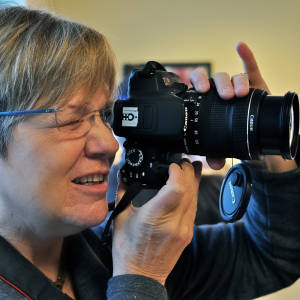Good Things Come To Those Who Wait
Today I decided to spend the entire day over on the west side of San Juan Island, at the Lime Kiln Point State Park, in hopes of seeing the orcas. I had read that they had been out to sea for several days, but that they had returned yesterday to the west side. I was hoping to see a superpod, where all three resident pods link up, J, K, and L. When I arrived I noted that they had passed by the lighthouse going south at 5:30 in the morning. And I had checked the hydrophone at Lime Kiln about 6AM, but had not heard them...I was just a bit late. If you are interested in listening to the hydrophone, click here.
The hydrophone picks up the sounds of the orcas who communicate through cries. Each pod sounds different. The hydrophone is located just southwest of the lighthouse, attached to the sea floor according to Professor Robert Otis, PhD, who is a Professor of Psychology and Animal Behavior and Human Development at Ripon College, and Principal Investigator of Vessel Impacts to Southern Resident Killer Whales since 1989 at Lime Kiln Lighthouse, San Juan Island, WA
When I arrived at the lighthouse this morning in hopes of seeing the orcas, I immediately ran into Dr. Bob Otis
...he is such a friendly man, eager to share his knowledge and encourage the younger generation to get involved with the orcas, in any way they can. I overheard countless conversations with interested bystanders during the course of the day...he was always encouraging people to find a way to do their part in saving the orcas.
Here is a bit of info I found about Dr. Bob Otis found on the web...it's amazing what he does everyday...
Dr. Bob Otis, now a retired professor from Ripon College, has been collecting killer whale data and studying whale/boat interactions at Lime Kiln Lighthouse on the west side of Washington's San Juan Island for a quarter-century. Every year, from May 20th to August 10th, between the hours of 9am and 5pm, Dr. Otis and his team of interns records data on every group of killer whales that passes within half of a mile of the lighthouse in any direction. While his data of course doesn't fully document every time the whales are in inland waters, it's a valuable long-term data set collected in the heart of the summer range of the Southern Residents, and its consistent collection provides a reliable benchmark.
Every day, Dr. Otis and his team take many measurements in the one-mile long and half-mile out stretch of ocean, and every day they carefully catalogue the results. They measure how far the pod is spread from each other, the number of boats in the vicinity, how far offshore the whales are, their vocalizations, and the tide. And they've compiled an extraordinary long-term database on whale behavior in their study area. Dr. Otis has seen “over a thousand tail slaps and hundreds of breaches,” by his count. One thing people rarely realize about his research is the fact that is accessible to anyone who wants to learn about it. People all over the world have requested it and used it in PhD. dissertations and graduate projects. Pacific Whale Watch Association is proud to have assisted Dr. Otis and his team over the years in providing our platforms, as well as our perspectives from the water. In turn, they've provided us invaluable reports on how well we're doing out there. In large part to the observations of the researchers, PWWA voluntarily imposed a quarter-mile no-go zone along the west side of San Juan Island, extending to a half-mile zone at Lime Kiln. And whale watch operators continue to cull the notes of Dr. Otis and other longtime westside researchers to modify current guidelines to better protect the Southern Resident orcas.
To make a long story short, I spent the entire day waiting for a pod of resident orcas coming from the north, and another coming from the south. The southern pod made it almost to the lighthouse, and then turned around and went south again. The northern pod didn't arrive until after 4pm...but the wait was worth every second. There were breaches, tail slapping, and they came in quite close to the lighthouse. It took over an hour for them to all pass by. I finally left at 5:30 and I'm sure that the southern pod probably came up later in the evening, but I was exhausted and knew it was time to leave.
I hope you enjoy the photos from the day on my Flickr page...good things come to those that wait!
I also made the local update for San Juan Island...I feel very honored!

Comments
Sign in or get an account to comment.


